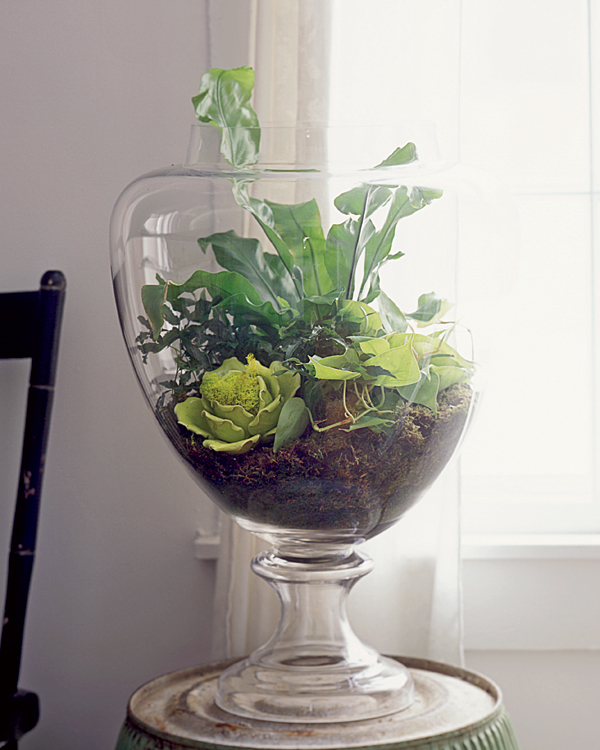Make a Terrarium | Plant Crafts
Grow in glass, and you can savor a tiny sample of summer at your elbow in any season. Today’s terrariums are sleek, simple, and fuss-free. Enlist any glass container–apothecary jar, soup tureen, cookie jar, canning jar, or whatever you have on hand. Choose one with a wide mouth for easy maintenance (put a lid on […]


Photo Credit : Johann, Susan
Materials to Make a Terrarium
1 wide-mouth glass container (lid optional) 1 pair gardening gloves 1 cup 3/8-inch pebbles 1 heaping tablespoon charcoal 2 to 3 cups potting soil 3 or 4 shade-loving dwarf plants 1 ornament or accent
Instructions to Make a Terrarium
1. Prepare the base. Wearing gloves, sprinkle the pebbles into the container, covering the base with an inch of stone. Then sprinkle in the charcoal (available at garden centers and aquarium stores) and mix them together. Add a 2- to 3-inch layer of potting soil and tamp it down.
2. Add plants. Design your space just as you would a garden scene, with a variety of shapes and textures. One effective and simple formula is: one vertical plant plus one bushy plant plus groundcover. The easiest plants for the job are ferns, spike and club mosses, ivies, orchids, peperomias, pileas, African violets, and begonias. Dig a pocket into the potting soil to receive each plant, then firm each one into its space. Make sure no roots are exposed.
3. Add a focal point. We used a cabbage-shaped porcelain votive holder filled with dyed moss here, but accents can be cost-free; just take a walk around your yard to find lichen-covered pieces of bark, pinecones, seedpods, or intriguing stones. Seashells are also apropos. Then after you’ve set your scene, water your plants lightly into place.
4. Remember: location, location, location. Terrariums prefer indirect light. Place the container near an east or west window, away from potentially burning sunbeams. No need to worry about lack of humidity; your terrarium will remain moist.
5. Keep maintenance simple. If you’re working with an open-mouthed terrarium, you might need to water once a week. If the container is closed, it’ll need water less often. Open the lid every 10 to 14 days and air it out for half a day; then close it again. If condensation appears on the glass, no need to water. If not, give it a slight drink. Remove flowers after they fade, and divide or prune plants if they begin stepping on their terrarium-mates’ toes. Terrariums don’t need food; after all, the goal is to keep the plants dwarf size. Most of your time will be spent sitting back and admiring your sparkling mini-garden.
___________ For many more suggestions, tips, plans, resources, and photos, pick up a copy of The New Terrarium: Creating Beautiful Displays for Plants and Nature (Clarkson Potter; $25) by Tovah Martin and Kindra Clineff.

